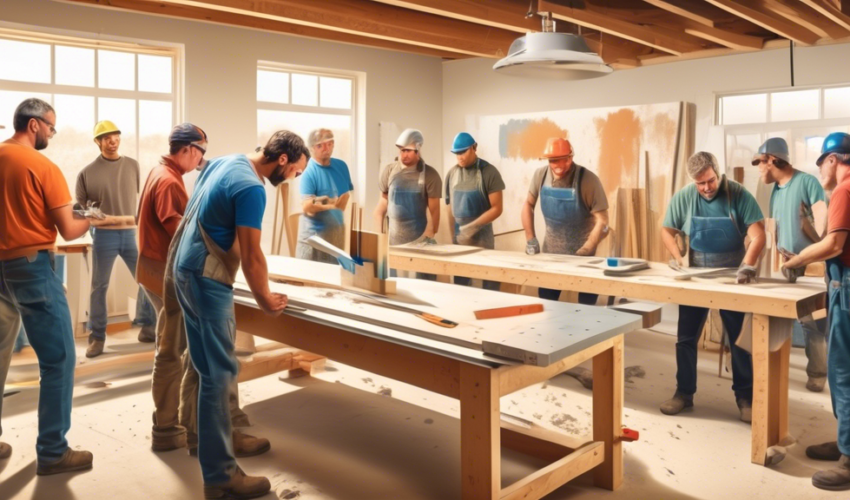Introduction to Drywall Finishing
Drywall finishing is a crucial skill for both professionals and DIY enthusiasts alike. Mastering this art can transform a room from a mere structural space into a polished area ready for decoration. Whether you are working on a new construction or renovating an existing space, understanding the essential tips and techniques of drywall finishing is key to achieving a smooth, seamless appearance.
Tools and Materials Needed
Before diving into the technique, ensure you have the right tools and materials. These include drywall compound (also known as mud), joint tape, drywall knives in various sizes, a mud pan, a sanding block or drywall sander, and a corner tool for inside corners. A dust mask and safety glasses are also recommended to protect against dust and debris.
Step-by-Step Guide to Drywall Finishing
Step 1: Preparing the Surface
Begin by checking the drywall for any imperfections. Ensure that all screws are sunk slightly below the surface without breaking the paper. This preparation step is crucial for a smooth finish.
Step 2: Taping the Joints
Apply a thin layer of drywall compound along each seam. Press the joint tape firmly into the compound, smoothing it with your drywall knife to remove any air bubbles. This step helps prevent cracks and ensures that the seams between the drywall sheets are invisible once painted.
Step 3: Applying the First Coat of Compound
Using a wider drywall knife, apply a smooth, thin coat of compound over the tape. Extend the compound a few inches beyond the tape to blend it into the rest of the wall. Be patient and allow the first coat to dry completely, which may take up to 24 hours.
Step 4: Sanding
Once the first coat is dry, lightly sand the surface to eliminate any ridges or bumps. Use a fine-grit sandpaper and be careful not to tear the paper surface of the drywall or remove too much compound.
Step 5: Second and Third Coats
Apply a second coat of drywall compound, using a wider knife to feather the edges, making the seam even less visible. Allow this coat to dry fully before lightly sanding again. Repeat this process with a third coat for the smoothest finish, especially if the wall will be subjected to critical lighting conditions.
Step 6: Final Sanding and Inspection
After the final coat has dried, conduct a thorough sanding for a texture-free finish. Use a light held at an angle to the wall to help spot any imperfections. Any found imperfections should be filled with compound, dried, and sanded again.
Advanced Techniques and Tips
Skim Coating
If you’re dealing with a wall full of imperfections or a repair job, consider skim coating. This involves applying a very thin layer of compound across the entire surface of the wall to create a brand new skin that’s smooth and free of blemishes.
Corner Finishing
Corners can be particularly challenging. Use a corner tool to apply compound evenly on both sides of inside corners. For outside corners, consider using a metal or plastic corner bead, which can be taped and mudded just like a flat seam.
Conclusion
Mastering the art of drywall finishing requires patience, practice, and attention to detail. By following these steps and tips, you can achieve a professional-quality finish that provides the perfect canvas for your decorating ideas. Remember that each project is unique, and it’s okay to make mistakes as you learn. With time, you’ll develop a technique that works best for you and yields the smooth, seamless walls you’re aiming for.

